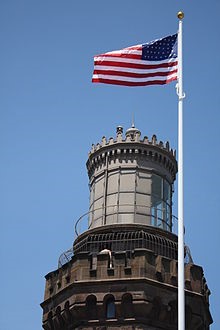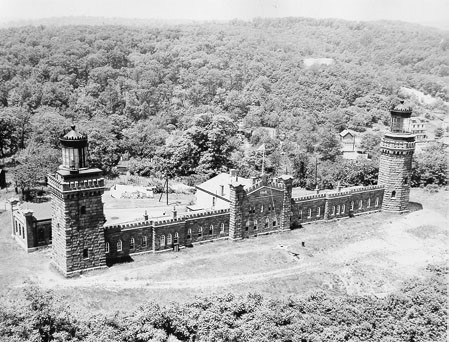September 22, 2020
DEP : It’s 2006, Highlands’ Twin Lights Becomes a National Historic Landmark
A lighthouse is a beacon – a signal to ships that guides them safely near the shoreline.

These towers, each with a bright light at the top, are located at an important or dangerous place for navigation over water, according to the National Park Service. The main purpose of a lighthouse is twofold: to serve as a navigational aid, and to warn boats about dangerous areas.
There are 11 lighthouses in New Jersey:
- Cape May Lighthouse in Cape May Point
- Barnegat Lighthouse in Barnegat Light
- Twin Lights in Highlands
- Sandy Hook Lighthouse in Highlands
- Sea Girt Lighthouse in Sea Girt
- Tucker’s Island Light in Tuckerton
- Absecon Lighthouse in Atlantic City
- Hereford Inlet Lighthouse in North Wildwood
- East Point Lighthouse in Heislerville
- Finn’s Point Rear Range Light in Pennsville
- Tinicum Rear Range Lighthouse in Paulsboro
New Jerseyans love these towering guideposts. Many have climbed the 199 steps of the Cape May Lighthouse, the 217 steps of Old Barney and the 228 steps of Absecon – the Garden State’s tallest lighthouse at 171 feet. The Lighthouse Challenge of New Jersey, which celebrated its 20th anniversary in 2019, invites participants to visit (and hopefully, climb) all of New Jersey’s maintained lighthouses.
Here, some facts about New Jersey lighthouses:
- Built in 1859, the Cape May Lighthouse is still an aid to navigation.
- Barnegat Lighthouse, on the northern tip of Long Beach Island, was regarded as one of the most crucial “change of course” points for coastal vessels.
- Sandy Hook Lighthouse is the oldest operating lighthouse in the United States.
- The Sea Girt Lighthouse – housed in an L-shaped Victorian building – first shown its light in 1896; it was decommissioned in 1945.
- The Tucker’s Island Light, built in 1848, guided traffic into Little Egg Harbor. Its use was discontinued in 1859 and it toppled into the water in 1927. Six decades later, a re-creation of the lighthouse was built at Tuckerton Seaport.
- Absecon Lighthouse is the third tallest mason lighthouse in the United States and is more than 160 years old, having been built in 1857.
- The East Point Lighthouse has a distinctive Cape Cod style – the two-story brick structure is whitewashed, with a bright red roof and has a black lantern.
- Finn’s Point was constructed in 1876 in Buffalo, N.Y., and moved to New Jersey by train and mule wagon. It is a wrought iron, open-frame lighthouse and is listed on the National Registry of Historic Places.
And now, a look at 2006 …
In 2006, the Navesink Light Station in Highlands was designated a National Historic Landmark, joining the ranks of Mount Vernon, the Apollo Mission Control Center and other sites considered to be of exceptional value and national significance to all Americans.
“National Landmark status is the highest level of distinction. It’s a great honor for a site to be given that,” said Amy Cradic, then-DEP Assistant Commissioner of Natural and Historic Resources, in an article appearing in The Star-Ledger.
>

The fortress-like brownstone structure was built in 1862, replacing earlier buildings that had fallen into disrepair.
In addition to presiding over ship traffic into one of the busiest ports in the country, the station was a proving ground for important technologies, such as the use of mineral oil for lamps and the revolutionary Fresnel lens.
In 1899, Italian inventor Guglielmo Marconi placed an antenna at the lighthouse for a demonstration of his “wireless telegraph,” and Twin Lights became the nation’s first wireless telegraph station capable of sending and receiving messages on a regular commercial basis. The station also was the site of early radar experiments conducted by the U.S military.
In her announcement of the National Landmark designation, then-DEP Commissioner Lisa Jackson stated, “Twin Lights stands today as a reminder of the important role lighthouses played in the maritime history of this country. Sites like this inspire us to protect and preserve our precious historic resources.”
Decommissioned in 1949, the Twin Lights was acquired by the state in 1962 and today is owned and operated by the DEP’s Division of Parks and Forestry.
###
 OFFICIAL SITE OF THE STATE OF NEW JERSEY
OFFICIAL SITE OF THE STATE OF NEW JERSEY